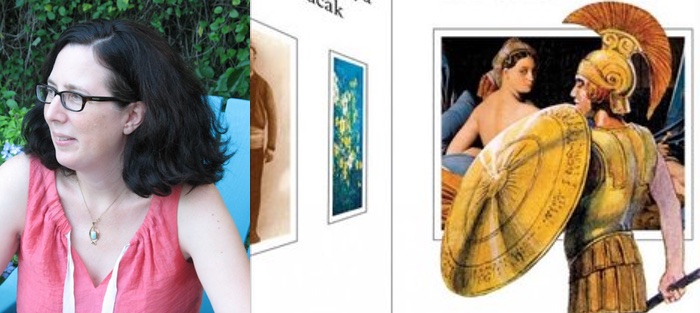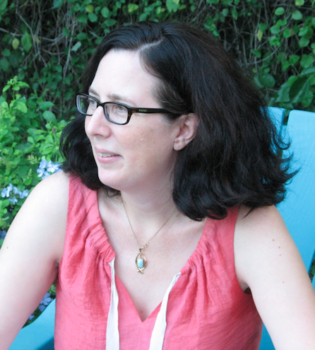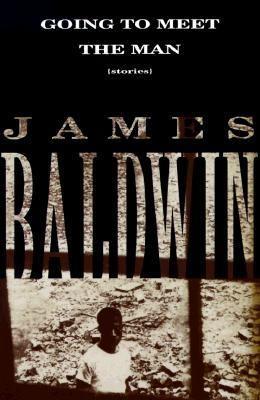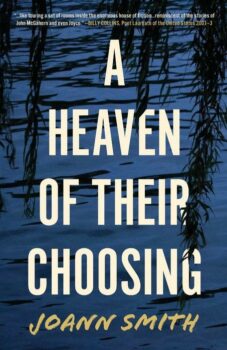The stories in Ayşe Papatya Bucak’s The Trojan War Museum (W.W. Norton) are heady and cerebral, compelling and thoughtful, intensely researched, sometimes lyrical, often understated.
It’s a powerful mix for a short story collection—strong enough to follow a reader around for a while, not unlike one of the ghosts or gods in its tales. Months after I finished this book I had the disorienting experience of telling a friend about this crazy true story I’d heard, about a woman in Florida who found murder mystery notes while working at an international pregnancy resort, only to remember that it was not in fact a news article but a realist story from this collection (“Good Fortune”). Since then I’ve referred back to The Trojan War Museum many times, not only to fact check myself in the era of fake news but as a literature reader who wanted to remember a particular sentence that moved her or revisit the couple whose sweet and slow relationship surprised me in its development and left me wondering how the two might be doing these days (“Mysteries of the Mountain South”).
The stunning wideness of Bucak’s reading list is reflected in these stories, too, and is something I already knew about her as one of her thesis students in Florida Atlantic University’s MFA program; it seems there is little she hasn’t read or researched, and her readers benefit by coming away from her collection more cognizant of the bright spots and horrifying lows of human history, particularly the histories, real or imagined, of people they may not otherwise encounter.
Ayşe Papatya Bucak is an associate professor in the MFA program at Florida Atlantic University. Her short fiction has been selected for the O. Henry and Pushcart prizes, and her collection The Trojan War Museum and Other Stories was published in August 2019. We exchanged these questions and answers over email.
Interview:
Natalie Rowland: One of the distinctive things about your collection, I think, is the range of its content; it reminded me of Rebecca Makkai’s Music for Wartime in that each time I finished a story, I had little sense of what was coming with the next one. I never got comfortable. We get ghost-girl narrators, a widow playing chess with an automaton, a 27-year-old funeral director who blogs about it, deep national histories and myths. . . . Are you deliberate about achieving that range?
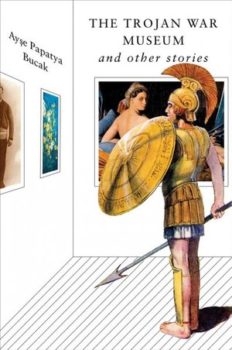 Ayşe Papatya Bucak: The first two stories I wrote for the collection were “History of Girls” and “Iconography”—and truthfully I wrote them without knowing I was writing a collection. They were just a break from the (failing) novel I was supposed to be revising. But they felt connected, and I could tell they were better than any stories I’d written before, and so they gave me the idea to write stories specifically for a collection related to my version of Turkishness. But because they felt a little similar (both about girls), I did deliberately try to write something different with the next story (which was “A Cautionary Tale” about the wrestler). And then as the writing went on, in order to keep myself interested, I found it helpful to set specific goals or challenges, such as write a Southern story. That was more for me than the reader, but I also didn’t want to give a reader the same experience over and over again.
Ayşe Papatya Bucak: The first two stories I wrote for the collection were “History of Girls” and “Iconography”—and truthfully I wrote them without knowing I was writing a collection. They were just a break from the (failing) novel I was supposed to be revising. But they felt connected, and I could tell they were better than any stories I’d written before, and so they gave me the idea to write stories specifically for a collection related to my version of Turkishness. But because they felt a little similar (both about girls), I did deliberately try to write something different with the next story (which was “A Cautionary Tale” about the wrestler). And then as the writing went on, in order to keep myself interested, I found it helpful to set specific goals or challenges, such as write a Southern story. That was more for me than the reader, but I also didn’t want to give a reader the same experience over and over again.
So periodically if I felt like I was falling into certain patterns, I’d try to do something different. For example, with the last story I wrote, “The Dead,” I wanted to return to more character-centered writing and work with traditional scene a little more. But I also wanted to try an oral narrative like the ones I had read in Svetlana Alexievich’s Voices From Chernobyl. So I just threw everything in there. I’m a big fan of Makkai’s book, and I was glad to have it as an example of a collection where the stories feel related but not connected by narrative. I feel the same about Steven Millhauser’s Dangerous Laughter, which was a big influence on me.
I feel like short story writers are so often pressed to either write a novel or pretend their book of stories is a novel, I definitely didn’t want to do that.
Mission accomplished.
Re: setting story goals and challenges (which is awesome), which one turned out to be toughest? Do you find certain forms are more accessible to you?
I started life as a very dialogue-heavy writer and that came easily back then. I seem to have lost that ease with dialogue and it disturbs me! Losing skills doesn’t seem fair. As a result, recently I have been thinking about scene a lot, and forcing myself to write in scene as I work on new things.
Yesterday I wrote myself a note that just says “White Noise” to try to get myself to write some BIG scenes. But I naturally lean toward “telling” a story . . . that fairy-tale-style narrator that has omniscience and a certain cadence, and often distance, to their speech. I can fall into that relatively easily. At one point I decided to see how many “told” stories I could fit inside of a single story; I wanted to write a story-in-stories. The result was “Little Sister and Emineh,” but I kept doing the same thing in other stories because I liked how the encapsulated stories could increase the scope of the overall story.
I had fun with that, but the toughest challenge by far was making the conscious decision to write about the Armenian genocide. On the one hand, that wasn’t a “form” decision or challenge; on the other hand, everything is a form. Stories about trauma or trauma survivors are a form—where readers have certain expectations that you as a writer need to both fulfill and subvert. I am still nervous about that story, “The Dead.” I felt very conscious of writing outside my experience and of the fact that by doing so I might upset both Turkish and Armenian (and especially Turkish-Armenian) readers. But I also felt as someone writing about Turkey, and as a Turk, I could not ignore the darkest part of Turkish history.
In “The Dead” you have this story of (Armenian) Anahid, “America’s favorite suffering angel,” whose trauma is so uncomfortably commercialized as a film, a dinner party performance—and then you aerate it with terrible specificities of genocide and violence:
The extraction of fingernails; the application of burning irons to the breast… boiled butter poured into wounds; the tearing off of genitalia. . . . Women were prostituted to the Ottoman soldiers, until the women caught venereal diseases. . . . If the soldiers knew we were rich, they put us in prison first, so that we’d bribe our way out. Women with venereal diseases were poisoned . . .
When you take on a story like this (which seems to amplify the historical experiences of so many real people, stories that deserve to be told), what does the research process look like? Do you have set principles or rules for yourself as you’re folding fact with fiction?
I’m actually trying to write an essay about this right now because I realized in hindsight I made some decisions a little casually—for example, I changed the names of some real-life historical figures and not others, but without a guiding principle other than my gut. What my gut told me about writing “The Dead” was I had gotten very uncomfortable with making violence poetic—this comes up in “The Trojan War Museum,” too—and so I wanted to write bluntly about some of the things that happened. The copy editor asked, in very careful terms, if these details were proven, and I said they were drawn from oral histories. Which are in such numbers that I certainly believe them. I think it would be unethical to “invent” too much in the case of writing fiction about a historical genocide (especially one that has been denied) but I also think to understate what happened would be unethical.
My research involved reading books by historians and by survivors, but also reading those books with an understanding that each of those authors has a point of view, that nobody is objective. Anahid is based on a real person (Aurora Mardiganian) whose story really was commercialized—so I tried to tell the story of her commercialization (as we would say in academia “teaching the controversy”), which hopefully makes my story something other than another commercialization of her trauma. Two major resources for me were Ravished Armenia by Anthony Slide and The Burning Tigris by Peter Balakian.
I love that each of your stories seems to have its own library behind it. In the Information Age, how do you cut yourself off? And since you write both fiction and nonfiction (interviewer plug: go read more of her work on Brevity, The Rumpus, Hobart, etc.), I’m curious how you learned about research as a literary practice and how you teach it as a professor.
I remember being in grad school and one of my friends mentioning that there was a student in her workshop (the writer Elissa Minor Rust) who was doing historical fiction, and I was truly shocked. It had never occurred to me to do that. Which is weird because I loved a lot of historical novels, including Beloved by Toni Morrison and Ragtime by E.L. Doctorow. But I didn’t actually start incorporating research in my work until I was reading a lot more creative nonfiction. That and Andrea Barrett’s short story collection Servants of the Map gave me models for blending facts into non-journalistic work.
I’m not sure that I especially “teach” research other than to encourage it and to offer up models. I know people often worry about doing too much research or including unnecessary research—but I feel like the regular techniques of good writing apply. The decision of whether or not to include a detail is no different if that detail is an imagined one or a factual one. The question is always: what is the detail contributing to the work? In terms of doing too much research, I like to research and draft at the same time. That way you can’t use the research as a procrastination method, and it works its way into the writing in a fairly fluid way. But honestly I do a lot of research—I don’t cut myself off. I try to read every relevant thing I can get my hands on. I like to say that my identity is my own lifelong research project, so even if I learn something too late to use it in one story, I might well end up using it elsewhere.
You and I were talking when the book was in its ARC (advance reader copy) stage and you mentioned that everyone seemed to have a different favorite story in the collection, yourself included. I’m partial to “Mysteries of the Mountain South,” while you said you’re most proud of the title story, “The Trojan War Museum.” What endears it to you?
I think it maybe is the peak example of the things I was interested in doing in the collection overall—writing a short story that felt fresh, that ran deep (or at least aspired to), that contained a multitude of stories. But it is also some people’s least favorite, so it’s a good reminder that originality is not everything, and sometimes is not anything. It was also just really fun to write about the Greek gods. I recently found an elementary school project I wrote on Greek myths, so I guess I’ve just been writing this story all along.
Of all these stories—in terms of how they came to you/progressed/what they entailed—which one has the quirkiest trajectory?
Most of them stayed pretty true to my original idea. “The Gathering of Desire” was meant to be solely about the chess master inside the automaton but then I read that a woman in Philadelphia beat the automaton one night, and that seemed so unusual, and so unacknowledged—I couldn’t find out anything about her—that I wanted to write her story. And then the automaton became sentient, but I imagine that was always destined to happen.
Life of the writer questions: What’s your schedule like? Plotter/pantser? Morning writer/night writer? Tea drinker/bourbon swiller?
I am a person who lives by “moderation in all things,” so I am a little bit plotter, little bit pantser. I brainstorm a lot. I lie on the couch a lot. I love writing in bed, which my mother firmly disapproves of. I like to write first thing in the morning, especially when working on something longer, but a lot of these stories got drafted during summer days when I wasn’t teaching. Some of them I inched forward on—I truly wrote “The Trojan War Museum” one sentence at a time—but others came in longer sittings, like “The History of Girls” and “Good Fortune.” I am a person who reacts very strongly to caffeine, and I can tell at which moments my writing voice was caffeinated. I’ve also been known to use music to generate a certain energy. I tend to be pretty mellow naturally, so I’ll use Gogol Bordello or any music with a different energy than my own, to try to get a different rhythm in my head. Then I turn it off to actually write.
Sometimes I’ll do this thing which I call “writing while reading,” where I read a book while simultaneously letting my mind wander a bit, until my brain starts coming up with sentences of my own that are set to the rhythm of the book I am reading. I know some people avoid that at all costs (getting someone else’s rhythm in their head) but I like it. It changes things up.
Lastly: You have some knockout endings in here (in both senses of the word—impressive and punch-you-out compelling or poignant, depending on the story). Any secrets for sussing out an ending or knowing when you’re done?
That’s nice of you to say. I actually worry that I have a tendency toward very similar endings, and I made sure not to put certain stories next to each other in the collection because I felt their endings echoed each other too much.
The original draft of “The History of Girls” did not include the turn to first person at the end, and my friend/reader Andrew Furman said, This needs something more. And the original draft of “The Dead” didn’t even include the party and my mother read it and said, You chickened out. So I suppose my tendency is to initially not take the plot far enough—avoiding the third act (or its equivalent) all together. I think “Does this feel complete?” is a pretty good question to ask an outside reader.
But once I have the end structurally I don’t usually have too much trouble coming up with the final sentences. Pretty often I’ll think of those beforehand. Pretty often they lean toward the lyric. With a couple of stories I wanted to end with the storyteller addressing the reader more overtly, which is something I think I stole from Armenian folktales, which often end “Three apples fell from heaven” and then usually include some variation on “one for the storyteller, one for the listener” and one for some odd third. I like the breaking of the wall that happens there.
I also had an explicit goal in this collection to have happy(ish) endings—which is not a very literary goal, I guess—but when you teach the short story, or simply read a lot of them, you realize what a dark form it is in terms of content and theme. I tried, most of the time, to end on a more hopeful note.

